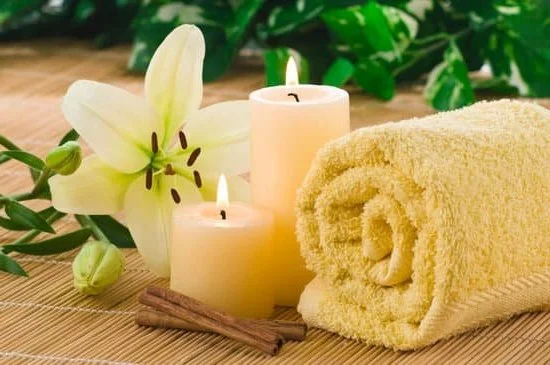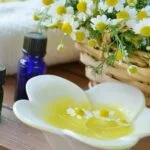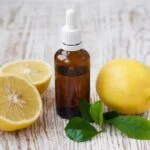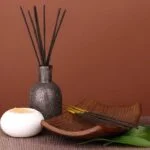Aromatherapy is a term that many people have heard before, but do we really understand its true meaning and potential? This ancient art has been practiced for thousands of years, offering a holistic approach to healing and enhancing overall well-being. In this article, we will delve into the world of aromatherapy, unraveling its concept, exploring its historical origins, and understanding how it works on a scientific level.
We will also discover the numerous benefits of aromatherapy and learn how to incorporate it into our daily lives for a more balanced and therapeutic experience. So join us on this fascinating journey as we dive into the ancient art of aromatherapy.
To truly grasp the meaning of aromatherapy, it is essential to understand its roots in history. Aromatherapy dates back to ancient civilizations like Egypt, Greece, and China where natural plant extracts were used for medicinal purposes. However, modern aromatherapy as we know it today emerged in the early 20th century thanks to the pioneering efforts of individuals like René-Maurice Gattefossé and Marguerite Maury. These pioneers recognized that essential oils hold remarkable healing properties when applied topically or inhaled.
At its core, aromatherapy harnesses the power of essential oils derived from plants to promote physical, emotional, and spiritual well-being. The scents emitted by these oils stimulate our olfactory system and interact with our body at a cellular level.
From reducing stress and anxiety to improving sleep quality and boosting mood, aromatherapy offers a wide range of benefits that contribute to overall improved health. By incorporating certain scents into our daily routines or using them during specific treatments such as massages or baths, we can tap into the healing powers of these essential oils.
In this article, we will not only explore what aromatherapy means but also uncover its rich history and evolution over time. We will examine the fundamental principles behind this therapeutic practice and delve into the science behind its mechanisms. Additionally, we will outline the specific benefits that aromatherapy can provide and offer practical guidance on how to get started with essential oils and tools for aromatherapy.
Furthermore, we will discuss different ways to incorporate aromatherapy into daily life and share some precautions and best practices to ensure a safe and effective experience. So, whether you are new to the world of aromatherapy or looking to deepen your knowledge, this article is your gateway to embracing the holistic healing potential of this ancient art.
Unraveling the Concept
Aromatherapy is a holistic healing practice that utilizes essential oils to promote physical, emotional, and mental well-being. The term “aromatherapy” was coined by the French chemist René-Maurice Gattefossé in the early 20th century, but the use of aromatics for therapeutic purposes dates back thousands of years.
At its core, aromatherapy involves the use of essential oils extracted from plants to enhance health and well-being. Essential oils are highly concentrated plant extracts that capture the fragrances and therapeutic properties of plants. These oils can be inhaled, applied topically, or used in various aromatic preparations like diffusers or candles.
The concept behind aromatherapy is rooted in the belief that certain smells can have a profound effect on our bodies and emotions. When we inhale an essential oil, it triggers our olfactory system, which is connected to the limbic system in our brain. The limbic system plays a key role in controlling emotions, memory, and other functions related to mood and well-being.
Aromatherapy is often used as a complementary therapy alongside conventional medicine to help alleviate symptoms of various physical and psychological conditions. It can help reduce stress, improve sleep quality, relieve pain and inflammation, boost mood and energy levels, enhance cognitive function, and promote relaxation.
A Deeper Dive
Aromatherapy, as an ancient art, has a rich history that dates back thousands of years. The practice of using essential oils and plant extracts for therapeutic purposes can be traced back to Ancient civilizations such as Egypt, China, India, and Greece. In fact, the term “aromatherapy” itself was coined by a French chemist named René-Maurice Gattefossé in the 1920s.
One of the earliest recorded uses of aromatherapy can be found in Ancient Egypt, where essential oils were used for embalming and in religious rituals. They believed that these aromatic substances had healing properties and could also connect them to their gods. Similarly, in Ancient China and India, essential oils were used in traditional medicine practices to treat various ailments and promote overall well-being.
It was during the Renaissance period that aromatherapy gained popularity in Europe through the work of physicians and alchemists. They recognized the medicinal properties of plants and began using essential oils to treat physical and emotional ailments. However, it wasn’t until the 20th century that modern aromatherapy as we know it today emerged.
The evolution of aromatherapy continued with the advancements in scientific research on plant essences and their effects on human health. Today, aromatherapy is widely recognized as a complementary therapy that can enhance physical wellness, promote relaxation, relieve stress, improve mood, aid sleep quality, and support mental well-being.
| Time Period | Significant Developments |
|---|---|
| Ancient Egypt | Essential oils used for embalming and religious rituals |
| Ancient China and India | Essential oils used in traditional medicine practices |
| Renaissance Period | Aromatherapy gains popularity in Europe through physicians and alchemists |
| 20th Century | Modern aromatherapy emerges with advancements in scientific research |
Aromatherapy Essentials
Aromatherapy is a holistic healing practice that utilizes essential oils to improve physical, emotional, and mental well-being. To have a comprehensive understanding of aromatherapy, it is essential to grasp the fundamental principles that underpin this ancient art.
One of the core principles of aromatherapy is the belief that essential oils possess powerful therapeutic properties. These oils are derived from plants and contain concentrated aromatic compounds. Each oil has its own unique composition, which contributes to its specific therapeutic benefits. For example, lavender oil is known for its calming and sleep-inducing properties, while peppermint oil is often used for its energizing and invigorating effects.
Another key principle of aromatherapy is the concept of synergy. This refers to the idea that when different essential oils are combined, they create a synergistic effect that enhances their individual benefits. This means that certain essential oil blends can have more potent effects than using single oils on their own. Additionally, synergy extends beyond just combining oils – it also involves pairing specific oils with complementary therapeutic modalities such as massage or meditation to enhance their overall efficacy.
Furthermore, safety and proper usage are crucial principles in aromatherapy. Essential oils are highly concentrated substances and should be used with caution. It is important to properly dilute oils before applying them topically or using them internally to prevent adverse reactions. Additionally, some essential oils may be contraindicated for pregnant women, individuals with certain medical conditions, or those taking certain medications. Understanding these precautions and best practices ensures that aromatherapy is used safely and responsibly.
The Science Behind the Scents
Aromatherapy has been practiced for centuries as a natural healing method, but how exactly does it work? The science behind aromatherapy lies in the powerful effects that certain scents have on the brain and body. When essential oils are inhaled or applied to the skin, they can stimulate various physiological responses that promote relaxation, pain relief, mood enhancement, and overall well-being.
One of the key pathways through which aromatherapy works is the olfactory system. When we inhale a scent, receptors in our nasal passages send signals to the limbic system of the brain, which is responsible for emotions and memories. This direct connection between our sense of smell and our emotions explains why certain scents can evoke strong emotional responses or trigger vivid memories.
In addition to its impact on emotions, aromatherapy also affects our physiology at a cellular level. Essential oils contain chemical compounds that have specific therapeutic properties. For example, lavender oil contains linalool and linalyl acetate, which have sedative and anxiolytic effects. These compounds can interact with receptors in our cells or be absorbed into the bloodstream, allowing them to exert their therapeutic benefits.
To better understand how aromatherapy works, it is important to explore two primary methods of administration: inhalation and topical application. Inhalation involves diffusing essential oils into the air or breathing them directly from a bottle or handkerchief. This allows the scent molecules to enter the nose and interact with the olfactory receptors.
Topical application involves diluting essential oils in carrier oils and applying them to the skin through massage or other means. In this case, absorption occurs through both skin cells and hair follicles, allowing for systemic effects.
| Methods of Administration | Effects |
|---|---|
| Inhalation | Direct interaction with olfactory receptors in the nose, triggering emotional and physiological responses. |
| Topical Application | Absorption through the skin, allowing for systemic effects and targeting specific areas of the body. |
| Chemical Compounds in Essential Oils | Specific therapeutic properties that can interact with receptors in cells or be absorbed into the bloodstream. |
Understanding the science behind the scents is crucial for harnessing the full potential of aromatherapy. By exploring how different essential oils interact with our bodies, we can tailor our use of aromatherapy to address specific health concerns and promote overall wellness. Whether it’s through inhalation or topical application, essential oils have the power to affect our emotions, physiology, and ultimately enhance our well-being.
Unveiling the Benefits
Aromatherapy has been practiced for centuries and is known to have numerous benefits for physical, mental, and emotional well-being. In this section, we will delve into the positive effects of aromatherapy and how it can enhance your overall health.
One of the main benefits of aromatherapy is its ability to promote relaxation and reduce stress. Certain essential oils, such as lavender and chamomile, have calming properties that can help soothe the mind and body. When inhaled or applied topically, these oils can help alleviate anxiety, insomnia, and even symptoms of depression.
Aromatherapy can also be beneficial for managing pain, especially when used in combination with other therapies. Oils like peppermint and eucalyptus have analgesic properties that can provide relief from headaches, muscle aches, and menstrual cramps.
Another advantage of aromatherapy is its potential to boost mood and improve cognitive function. Essential oils like lemon and rosemary have been shown to enhance focus, memory, and concentration. By stimulating certain areas of the brain through inhalation or massage, these oils can increase alertness and productivity. Additionally, some essential oils have uplifting properties that can help elevate mood and reduce symptoms of mild depression or seasonal affective disorder (SAD).
Furthermore, aromatherapy can support respiratory health by clearing congestion and promoting better breathing. Oils such as tea tree oil and eucalyptus are renowned for their expectorant properties that help loosen phlegm in the chest during colds or respiratory infections. Inhaling these oils through steam inhalation or using them in a diffuser can help alleviate symptoms of coughs, sinusitis, asthma, or allergies.
To fully experience the benefits of aromatherapy, it is important to use high-quality essential oils produced through reputable sources. Essential oils should be properly diluted before applying topically to prevent skin irritation or sensitivities. It is also essential to use oils that are safe for your specific health conditions, as certain oils may interact with medications or exacerbate certain medical conditions. Before using aromatherapy, it is advisable to consult with a qualified aromatherapist or healthcare professional.
Incorporating aromatherapy into your daily life can be done in various ways. Diffusing essential oils in a room can create a calm and inviting atmosphere, while adding a few drops of oil to a warm bath can provide relaxation and stress relief.
Creating personalized massage oils or lotions with essential oils is also an excellent way to harness the benefits of aromatherapy. Whether used for self-care rituals or as part of alternative healing treatments, the positive effects of aromatherapy are boundless.
Getting Started
Understanding Essential Oils
One of the key components of aromatherapy is the use of essential oils. These oils are derived from various plants, including flowers, leaves, stems, and roots. Each essential oil has its own unique aroma and therapeutic properties. It is important to choose high-quality essential oils that are pure and free from synthetic additives. Popular essential oils used in aromatherapy include lavender, peppermint, eucalyptus, tea tree, and lemon.
Tools for Aromatherapy
In addition to essential oils, there are a few tools that can enhance the aromatherapy experience. One of the most commonly used tools is an essential oil diffuser. This device disperses the aroma of the essential oil into the air through either heat or water vapor. There are various types of diffusers available, such as ultrasonic diffusers and nebulizing diffusers.
Another useful tool for aromatherapy is a carrier oil. Carrier oils are used to dilute essential oils before applying them to the skin. Examples of carrier oils include coconut oil, jojoba oil, sweet almond oil, and grapeseed oil. They not only help to reduce the potency of essential oils but also provide moisturizing benefits for the skin.
Additionally, other tools such as inhalers and roller bottles may be used for specific applications in aromatherapy. Inhalers allow you to inhale the aroma directly from a small tube filled with essential oils. Roller bottles come with a rollerball applicator that allows for easy topical application of diluted essential oils.
Choosing and Using Essential Oils and Tools
When selecting essential oils for aromatherapy, it is important to consider your specific needs or desired effects. For example, if you are looking to promote relaxation and stress relief, lavender or chamomile may be good choices. On the other hand, if you want to boost energy and focus, citrus oils like lemon or orange may be more suitable.
When using essential oils and tools for aromatherapy, it is essential to follow proper dosage and safety guidelines. Essential oils are highly concentrated substances and should be used with caution. Always dilute essential oils properly when applying them topically and ensure proper ventilation when using a diffuser.
By understanding essential oils and having the right tools at your disposal, you can embark on your aromatherapy journey with confidence, knowing that you are well-equipped to enjoy the therapeutic benefits of this ancient practice.
Practical Applications
Creating a Relaxing Atmosphere
One of the most common ways to incorporate aromatherapy into daily life is by creating a relaxing atmosphere at home. Essential oils, such as lavender or chamomile, can be diffused in a room to promote relaxation and calmness.
The scent of these oils has been shown to reduce stress and anxiety, making them perfect for creating a peaceful environment after a long day. Simply add a few drops of the essential oil to a diffuser or mix it with water and spray it in the room.
Another way to create a calming atmosphere is by adding some essential oils to bathwater. Lavender, for example, has been used for centuries for its soothing properties. By adding a few drops of lavender essential oil to warm bathwater, you can create a spa-like experience right at home. The scent will help you relax both your mind and body, promoting deep relaxation and restful sleep.
Boosting Focus and Concentration
In addition to promoting relaxation, aromatherapy can also be used to enhance focus and concentration. Certain scents have been shown to stimulate the brain and increase alertness. Peppermint essential oil, for instance, has invigorating properties that can help improve mental clarity and boost energy levels.
To incorporate aromatherapy into your work routine or study sessions, try using an essential oil diffuser on your desk or workstation. Alternatively, you can place a few drops of an energizing essential oil like rosemary on a tissue or cotton ball and inhale the scent whenever you need an extra mental boost.
Aiding in Sleep Improvement
Many people struggle with sleep issues, whether it’s difficulty falling asleep or staying asleep throughout the night. Aromatherapy can be particularly helpful in improving sleep quality by promoting relaxation and reducing anxiety.
One popular method is using lavender essential oil for its sleep-inducing properties. Adding a few drops of lavender oil to your pillowcase or using a spray with lavender scent on your beddings can help you relax and prepare for a restful night’s sleep. Additionally, diffusing lavender essential oil in the bedroom for about 30 minutes before going to bed can also be effective in promoting better sleep.
By incorporating these practical applications of aromatherapy into daily life, individuals can reap the benefits of enhanced relaxation, improved focus, and better sleep. Experimenting with different essential oils and finding what works best for your specific needs can further enhance the positive effects of aromatherapy.
Precautions and Best Practices
Aromatherapy is generally considered safe when used properly, but it is important to take certain precautions and follow best practices to ensure your safety and maximize the benefits of this ancient healing art. Here are some key safety measures to keep in mind when using aromatherapy:
- Dilute Essential Oils: Essential oils are highly concentrated substances that should never be applied directly to the skin without dilution. Most essential oils should be diluted with a carrier oil before use. Diluting essential oils not only helps prevent skin irritation or sensitization, but it also enhances absorption and extends the lifespan of the essential oil.
- Patch Test: Before applying an essential oil blend or a new essential oil to your skin, it is advisable to perform a patch test. Apply a small amount of the diluted essential oil mixture onto a small area of your skin, such as the inner forearm. Wait for at least 24 hours to see if any adverse reactions occur, like redness, itching, or inflammation.
- Use Quality Oils: To ensure safety and effectiveness, it is crucial to use high-quality essential oils obtained from reputable sources. Look for oils that are pure, unadulterated, and free from additives or synthetic ingredients.
- Research Each Oil: Different essential oils have varying properties and effects on the body. Educate yourself about each individual oil you plan to use before incorporating it into your aromatherapy practice. Some oils may not be suitable for certain individuals, such as pregnant women or those with specific medical conditions.
- Avoid Ingestion: In general, it is best to avoid ingesting essential oils unless under the guidance of a qualified aromatherapist or healthcare professional. While some oils may be safe for internal use in small amounts, improper ingestion can lead to adverse effects on health.
- Practice Proper Storage: Essential oils should be stored properly in dark glass bottles away from direct sunlight, heat, and humidity. Be sure to keep them out of reach of children and pets.
Taking these precautions and following best practices in aromatherapy will help ensure a safe and enjoyable experience. It is always advisable to consult with a qualified healthcare professional or aromatherapist for personalized advice, especially if you have any underlying health conditions or are taking medications that could interact with essential oils. By implementing these safety measures, you can fully embrace the holistic healing benefits of aromatherapy while prioritizing your well-being.
Conclusion
In conclusion, aromatherapy is a powerful and ancient practice that holds immense potential for holistic healing. Through the use of essential oils and their therapeutic properties, aromatherapy offers a natural and non-invasive approach to improving both physical and emotional health.
Throughout history, aromatherapy has evolved and adapted, but its core principles remain the same – harnessing the power of scent to promote well-being. Whether it’s through inhalation or topical application, aromatherapy works by stimulating the olfactory system and engaging with our senses on a deep level. The science behind this therapy is complex yet fascinating, as specific scents have been found to impact mood, cognition, and even physiological processes within the body.
The benefits of aromatherapy are wide-ranging and varied. From reducing stress and anxiety to relieving pain and promoting better sleep, there is an abundance of positive effects that can be experienced through consistent use of essential oils.
Moreover, incorporating aromatherapy into daily life is relatively simple with the wide array of essential oils available on the market today. Whether diffusing oils at home or using them in bath products or massage blends, there are numerous practical applications that allow individuals to reap the benefits of this ancient healing practice.
Although aromatherapy is generally safe when used properly, it is important to practice caution and adhere to best practices in order to ensure safety. An understanding of contraindications for different essential oils, proper dilution methods, and potential allergic reactions is crucial for a positive experience with aromatherapy. By following these precautions and consulting with a trained professional if needed, individuals can safely enjoy the many advantages that aromatherapy has to offer.
In summary, embracing the holistic healing provided by aromatherapy can enhance overall well-being and promote a deeper connection between mind, body, and spirit. Whether you’re seeking relief from physical ailments or simply looking for ways to manage stress in your everyday life, aromatherapy presents a natural and accessible option worth exploring.
With its rich history, numerous benefits, and practical applications, aromatherapy is truly a valuable tool for achieving balance and harmony in our hectic modern lives. So why not embark on your own aromatic journey and discover the transformative power of scent?
Frequently Asked Questions
What is the best definition of aromatherapy?
Aromatherapy can be defined as a holistic healing practice that utilizes the natural scents and aromatic compounds derived from plants, commonly known as essential oils, to promote physical, mental, and emotional well-being. These oils are typically extracted through processes like steam distillation or cold pressing from various parts of plants, such as flowers, leaves, stems, or roots.
The therapeutic benefits of aromatherapy lie within the aromatic molecules in these essential oils that can positively impact our senses and trigger specific responses within our body.
What is aromatherapy in simple terms?
Aromatherapy, put simply, is the use of plant-derived essential oils to enhance overall well-being. It involves harnessing the power of aroma to influence our mood, emotions, and even physical health.
The term “aroma” refers to the scent or fragrance produced by essential oils when they are released into the air or applied topically. By inhaling these pleasing scents or applying them on the skin through massage or baths, aromatherapy aims to provide relaxation, alleviate stress or anxiety, promote better sleep quality, relieve pain, boost energy levels, and address various other health concerns.
What is the aromatherapy used for?
Aromatherapy is used for a wide range of purposes due to its potential therapeutic effects. It has been utilized for centuries across different cultures for its ability to support physical and mental well-being.
Some common uses of aromatherapy include stress reduction and relaxation by utilizing calming scents like lavender or chamomile; promoting focus and concentration with invigorating scents such as rosemary or lemon; alleviating headaches using peppermint oil; aiding digestion through oils like ginger or peppermint; improving sleep quality using soothing scents like lavender or bergamot; boosting mood with uplifting oils such as citrus blends; relieving muscle aches and pains via massages with essential oil blends like eucalyptus or wintergreen; and supporting respiratory health with inhalation of oils like eucalyptus or tea tree. It is important to note that while aromatherapy can offer potential benefits, it is not a substitute for medical treatment and should be used as a complementary approach under professional guidance.

Are you looking for a natural way to improve your health and wellbeing?
If so, aromatherapy may be the answer for you.






